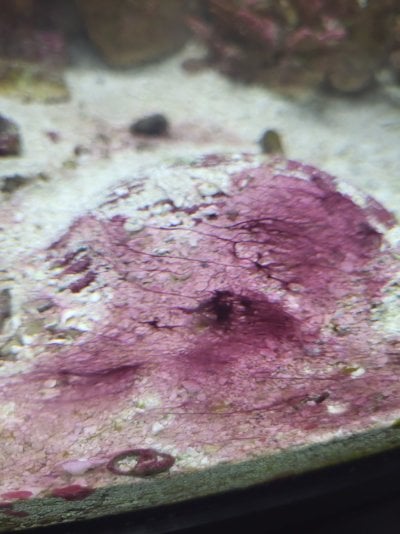Feel like this is cyano, but this is a well established tank and this stuff grows even in the heaviest flow areas. On everything... gravel, filter box/skimmer box, heater, and rocks. I'm considering adding a "Microbe-Lift Algaway 5.4 Algae Control Aquarium Algaecide" regiment, but I'm concerned I might kill the coraline algae as well. Of course I don't find anything that states 'coraline-safe/cyano-deadly'.
















